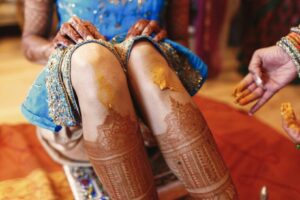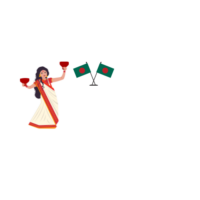Bengali culture, a vibrant tapestry of traditions and modernity, captivates anyone fortunate enough to explore its depths. Nestled in the eastern part of the Indian subcontinent, Bengal boasts a rich history that has shaped its unique identity. From its enchanting literature and soulful music to its delectable cuisine, Bengali culture offers a feast for the senses.
The essence of Bengal lies in its festivals, where communities come together in joyous celebration. Durga Puja, a grand spectacle, showcases the region’s artistic flair and spiritual devotion. The cultural landscape is further enriched by the works of renowned figures like Rabindranath Tagore, whose contributions to literature and art continue to inspire generations.
Bengali Culture Facts
Bengal’s artistic heritage reflects its rich cultural legacy, vibrant expressions, and historical influences. This heritage encompasses literature, poetry, music, and dance, with each art form contributing significantly to Bengali culture.
Literature and Poetry

Bengali literature is renowned for its profound depth and diversity. Its roots trace back to ancient texts like “Charyapada” from the 8th century. Modern literature thrived with illustrious figures like Rabindranath Tagore, who won the Nobel Prize in Literature. His works, alongside those of Bankim Chandra Chattopadhyay and Sarat Chandra Chattopadhyay, showcase a unique blend of social commentary and human emotion. Poetry in Bengal often captures the essence of love, nature, and human struggles, with Jibanananda Das and Kazi Nazrul Islam offering timeless contributions that continue to inspire.
Music and Dance
Music and dance in Bengal are dynamic expressions of its cultural tapestry. Rabindra Sangeet, a genre of songs penned by Tagore, combines classical melodies with lyrics exploring humanity and nature. Nazrul Geeti, by Kazi Nazrul Islam, is known for its revolutionary spirit. Folk music forms like Baul and Bhatiyali, often accompanied by traditional instruments like the ektara, add to the region’s musical diversity. Dance forms such as Gaudiya Nritya and Chhau offer vibrant and dramatic portrayals of mythological tales, enhancing the cultural richness of Bengali artistry.
Rich Tradition of Bengali Cuisine
Bengali cuisine offers a culinary journey steeped in tradition and regional flavors. This cuisine, known for its diverse and balanced taste, emphasizes the use of fresh ingredients and distinctive spices.
Popular Dishes

Bengali cuisine includes a variety of mouth-watering dishes. Machher Jhol, a spicy fish curry, is a staple in Bengali households. It’s often prepared with seasonal vegetables and enjoyed with steaming rice. Rasgulla, a famous Bengali sweet, captivates people with its soft, syrupy texture. Made from chenna (cottage cheese) and sugar syrup, it’s a must-try for those with a sweet tooth. Shorshe Ilish, made with hilsa fish and mustard paste, combines pungent mustard flavors with tender fish pieces to create a spicy delight.
Influence of Festivals on Cooking
Festivals significantly influence Bengali cooking, introducing unique flavors and creativity. During Durga Puja, households prepare elaborate meals featuring dishes like Khichuri and Labra (mixed vegetable curry), symbolizing prosperity and togetherness. Nabobarsho, the Bengali New Year, encourages the preparation of traditional sweets such as Payesh (rice pudding) and Sandesh. These dishes reflect the celebratory spirit and deep tradition inherent in Bengali culture.
Celebrated Festivals and Rituals
Bengali culture revolves around various vibrant festivals that reflect its artistic and spiritual essence. These celebrations bring communities together through shared traditions and rituals.
Durga Puja

Durga Puja stands as the most prominent festival in Bengali culture. Celebrated for ten days, it honors the goddess Durga’s victory over the demon Mahishasura. This festival showcases magnificent artistry through intricately designed pandals (temporary structures) and idol displays. Communities engage in cultural programs involving music, dance, and drama, transforming cities like Kolkata into cultural hubs. Devotees partake in rituals including “Anjali” (offering prayers) and “Sindoor Khela” (vermillion play), reinforcing shared cultural heritage and devotion.
Tradition and Innovation
Bengali culture stands as a testament to a vibrant heritage that seamlessly weaves together history, art, and tradition. Its rich tapestry is adorned with literary brilliance, melodic music, and culinary delights that capture the essence of its people. Festivals like Durga Puja and Pohela Boishakh not only celebrate spiritual devotion but also foster a sense of community and shared identity. The contributions of luminaries such as Rabindranath Tagore continue to inspire and shape the cultural landscape. Bengali culture’s enduring legacy lies in its ability to blend tradition with modernity, creating a dynamic and resilient identity that continues to thrive.

